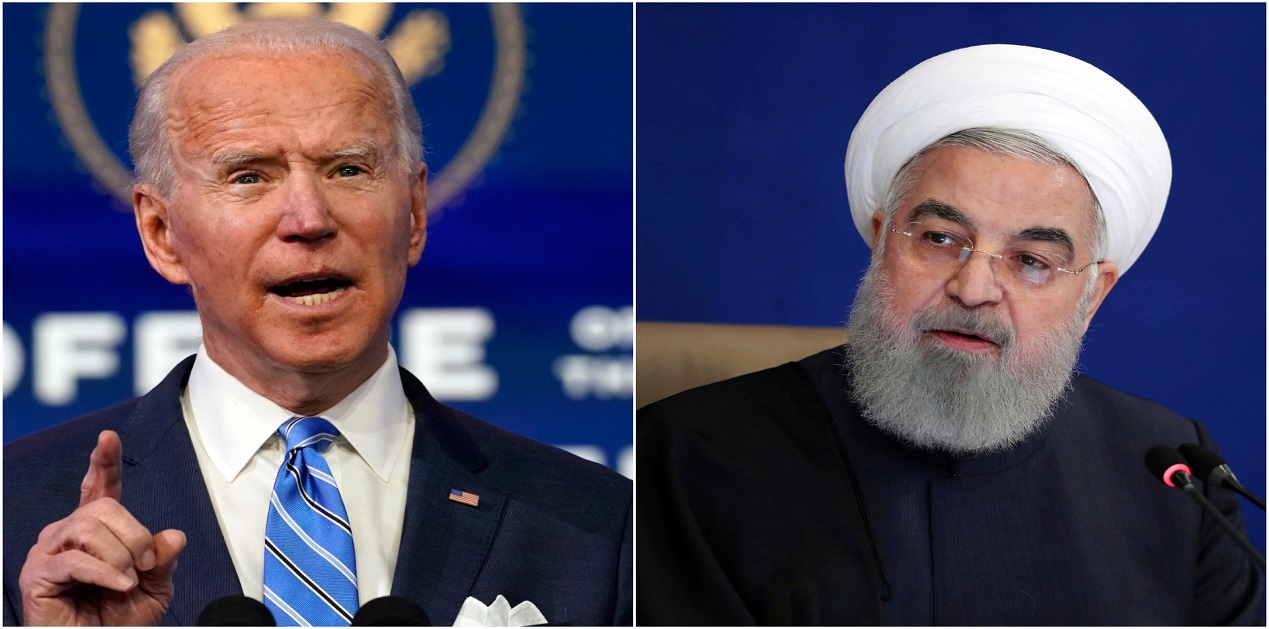21st February is an important date in the global calendar this year and specifically for Iran and the West Asian region. On this day, Iran has declared that it will expel United Nations nuclear inspectors unless sanctions imposed on it by the US are lifted1. This may perhaps end whatever slim hope there is of salvaging the Iran nuclear deal.
Earlier, on 02nd December 2020, Iran’s Guardian Council ratified a legislation passed by the parliament requiring Iran to take significant steps to ratchet up its nuclear activities in 60 days if certain sanctions relief measures are not met2. This would mandate the Atomic Energy Organization of Iran to increase enrichment of Uranium to 20 percent from the permitted 3.67 percent under the nuclear deal as also cease implementing the Additional Protocol if banking and oil sanctions are not lifted.
Notwithstanding the developments on/post 21st February in Iran, the election of Joe Biden as the US president, an important figure in the negotiations and signing of the Iran nuclear deal in 2015, offers hope. However, revival of the nuclear deal, unilaterally abandoned by the US in May 2018, would require more than just hope. President Biden may be willing to return to the table but has yet to announce any concrete measures. Iran, on the other hand is firm that return to the original deal coupled with lifting of sanctions under the ‘maximum pressure’ policy of previous US administration has to be the start point.
Recent statements, both by the US as well as Iran, seem to be testing waters. On his first full day in office on 27th January, US Secretary of State Antony Blinken stated that if Iran were to become compliant with the terms of the Joint Comprehensive Plan of Action (JCPOA or the “Iran deal”), the US would re-enter it too3. Iran Foreign Minister was quick to point out that it is for the US to make the first move, tweeting “Reality check for @SecBlinken: The US violated JCPOA, who should take 1st step? Never forget Trump’s maximum failure”4. Amidst this diplomatic jockeying, the Iran nuclear deal hangs in the balance.
Background
The JCPOA, signed in July 2015 after prolonged negotiations, had very strict and crippling restrictions on Iran’s nuclear program.5 Under its mandate, Iran could operate only 5,000 first generation IR-1 centrifuges to enrich uranium, that too only up to 3.67 percent enrichment. All uranium enriched to 20 percent was to be scrapped or shipped out, core of its Heavy Water Plant at Arak was to be demobilised and most importantly, Iran agreed to ‘anywhere, anytime’ inspections of its nuclear facilities by the IAEA inspectors. Despite being a virtual death blow to its nuclear programme, Iran stuck to the deal and all IAEA reports thereafter (till March 2019 when Iran decided to publically break free from JCPOA) confirmed Iran’s compliance with the terms of its commitments.
The election of Donald Trump as US President in November 2016, however, was a setback to the deal. Acting on his election promise, on 8th May 2018, Trump pulled the plug on the nuclear deal terming it a “horrible one-sided deal that should have never, ever been made”.6 US Secretary of State Mike Pompoe, on May 21 announced a list of 12 demands, fulfillment of which would be a must for any future deal with Iran. Some of these issues were not even part of the nuclear deal like putting severe restrictions on Iran’s ballistic missiles programme, stop enrichment of plutonium reprocessing, closing its heavy water reactor, and end support to Middle East “terrorist” groups, including groups like Hezbollah, Hamas, Islamic Jihad and Houthis in Yemen etc.7
The other signatories to the deal made several attempts to salvage the JCPOA. The European Commission adopted a €18 million package to help Iran.8 Germany, France and the United Kingdom established a ‘special purpose vehicle’ to facilitate transactions for non-sanctioned trade with Iran, called the ‘Instrument in Support of Trade Exchanges’ (INSTEX)9. Under this arrangement, the first transaction was successfully completed on 31st March 2020 when a batch of medical supplies was delivered to Iran.
On the other hand, Trump administration continued to adopt a ‘maximum pressure’ policy, vis-à-vis Iran. However, it was only after the US administration targeted key organisations and functionaries that Iran reacted. In response to the US designating the Islamic Revolutionary Guard Corps (IRGC) of Iran as a Foreign Terrorist Organization on 08th April 2019, Iran retaliated by announcing that it will install a cascade of 20 IR-6 centrifuges (only IR-1 were permitted under JCPOA) at Natanz. When the US announced sanctions the Supreme Leader of Iran and his office in June 2019, Iran breached the 300 kilogram limit on uranium gas enriched to 3.67 percent. Continuing to rebuild its nuclear programme, Iran announced in November 2019 that it has taken a step on construction of the planned nuclear reactor at Bushehr.
On 02nd January 2020, Iranian Major General Qasem Soleimani, leader of the Islamic Revolutionary Guard Corps- Quds Force was assassinated. US Department of Defense published a press release claiming responsibility for it. This was perhaps the last straw as Iran declared soon after that will no longer adhere to JCPOA restrictions.
Going Forward
While both the US and Iran have indicated their intentions to revive the deal, the onus perhaps lies with the US to take the first step. While permitting Iran to sell crude oil in the global market may still be off the table, allowing supply of crude oil at least to eight countries (India, South Korea, Japan, Italy, Turkey, Greece, Taiwan and China) that were exempted in May 2018, could be a start.10 Easing sanctions on Iran’s Supreme Leader could also be hugely symbolic.
The US decision to end support to the Saudi Arabia-led military campaign in Yemen11 is important as the US has provided critical support to the Saudi led coalition since 2015 by way of arms sales, intelligence, supply of drones and mid-air refuelling to coalition fighters. Return of aircraft carrier USS Nimitz from the Arabian Gulf,12 after an extended stay in the region could also be seen as step in the right direction. It may be recalled that the US has maintained a continuous aircraft carrier presence in the Gulf region since the USS Abraham Lincoln was sent in May 2019 after the Iran shot down a US drone in the Arabian Gulf, sparking tensions and threat of a military conflict.
The recently signed ‘Abraham Accords’13 between Israel and some of the Muslim nations in the region like UAE, Bahrain maybe significant towards a larger efforts towards reconciliation between the Muslim world and Israel but should not be projected as an anti-Iran alliance, which could add to doubts and mistrust with Iran. The US will also have to be mindful of recent demands from regional players like Saudi Arabia and UAE for their inclusion in any future nuclear deal with Iran, which has been, at least for now dismissed by Iran14. Any other aspects like Iran’s ballistic programme will have to be negotiated separately and mutually.
If Iran sticks to its decision to ramp up its nuclear program, it will be very difficult to bring it back to the negotiating table. 21st February is also an interesting choice of date as it gives precisely one month to the Biden Administration to decide on its options. Till then, chances of revival of the Iran nuclear deal hang on by a slender thread of hope.
Endnotes
- Iran will expel U.N. nuclear inspectors unless sanctions are lifted: lawmaker, Reuters News, 09 January 2021, https://www.reuters.com/article/us-iran-usa-nuclear-idUSKBN29E0FQ
- We will expel IAEA inspectors if sanctions not lifted by Feb. 21: MP, Tehran Times, 09 January 2021, https://www.tehrantimes.com/news/456794/We-will-expel-IAEA-inspectors-if-sanctions-not-lifted-by-Feb
- Sriram Lakshman, U.S. will rejoin deal if Iran becomes compliant with deal’s terms: Blinken, The Hindu, 28 January 2021, https://www.thehindu.com/news/international/us-will-join-nuclear-deal-if-iran-complies-with-provisions-blinken/article33681021.ece
- Parisa Hafezi, Iran says U.S., not Tehran, should act first to resolve nuclear deal row, Reuters News, 28 January 2021, https://www.reuters.com/article/iran-nuclear-usa-int-idUSKBN29X1ZL
- The Joint Comprehensive Plan of Action (JCPOA) at a Glance, Arm Control Association, https://www.armscontrol.org/factsheets/JCPOA-at-a-glance
- Iran deal: Trump breaks with European allies over 'horrible, one-sided' nuclear agreement, Guardian News, 08 May 2018, https://www.theguardian.com/world/2018/may/08/iran-deal-trump-withdraw-us-latest-news-nuclear-agreement
- Mike Pompeo speech: What are the 12 demands given to Iran?, Al Jazeera News, 21 May 2018, https://www.aljazeera.com/news/2018/5/21/mike-pompeo-speech-what-are-the-12-demands-given-to-iran
- Press Release, European Commission adopts support package for Iran, with a focus on the private sector, 23 August 2018, https://ec.europa.eu/commission/presscorner/detail/en/IP_18_5103
- France, Germany, United Kingdom: joint statement on the creation of INSTEX, 31 January 2019, https://www.gouvernement.fr/en/france-germany-united-kingdom-joint-statement-on-the-creation-of-instex
- India, China among eight countries exempt from US sanctions on Iran oil, Economic Times, 06 November 2018, https://economictimes.indiatimes.com/industry/energy/oil-gas/india-china-among-eight-countries-exempt-from-us-sanctions-on-iran-oil/articleshow/66520204.cms?from=mdr
- Biden announces end to US support for Saudi-led offensive in Yemen, Guardian News, 04 February 2021, https://www.theguardian.com/world/2021/feb/04/us-end-support-saudi-led-operations-yemen-humanitarian-crisis
- Eric Scmitt, U.S. Aircraft Carrier Returning Home After Long Sea Tour Watching Iran, New York Times, 01 February 2021, https://www.nytimes.com/2021/02/01/us/politics/aircraft-carrier-nimitz-iran-biden-persian-gulf.html
- The Abraham Accords Declaration, US Department of State, https://www.state.gov/the-abraham-accords/
- Iran rejects new talks or parties in nuclear deal, al Jazeera News, 30 January 2021
(The paper is the author’s individual scholastic articulation. The author certifies that the article/paper is original in content, unpublished and it has not been submitted for publication/web upload elsewhere, and that the facts and figures quoted are duly referenced, as needed, and are believed to be correct). (The paper does not necessarily represent the organisational stance... More >>
Image Source: https://static.timesofisrael.com/www/uploads/2021/01/pjimage-1-1.jpg










Post new comment